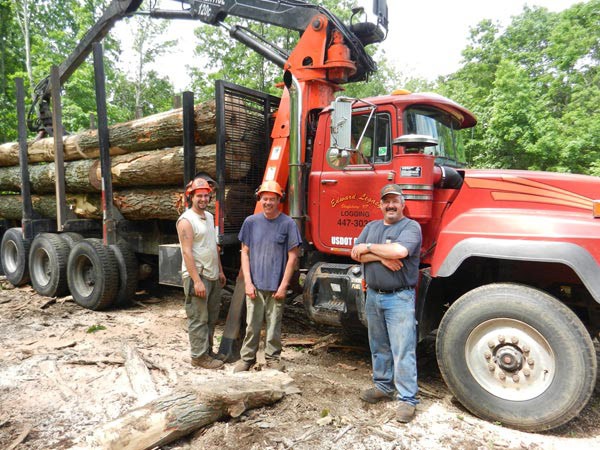
OK, so back to the clearcut. (If you missed Part 1 of the blog, read it here.)
By meeting certain silvicultural criteria, and by agreeing to execute the clearcut in a bird-friendly way (nothing onerous; basically it needed to be a certain size and shape; we needed to leave a certain number of snags and tops; we needed to follow best management practices), we were eligible for some cost share through the U.S. Department of Agriculture.
We hired a logger at a per-hour rate to cut and skid the wood and work it up on the landing. He did about 9 acres and charged us around $12,000. We’ve sold a load of logs, a load of pulp, and about 45 cords of firewood so far, which, combined with the cost share, has netted us about $8,000. There are about 50 cords of firewood left (a rough guess). My immediate family burns around 35 cords a year between our homes and the sugaring operation, so we’ll pay the farm for this wood. Doing the math on what’s left to be sold, it looks like we’ll end up just about breaking even – maybe slightly up, maybe slightly down – when all is said and done, though any theoretical profits will be used up in a few years spot-treating the invasives that will inevitably try to colonize the opening.
So there it is. If you’re a glass is half-empty person, you could look at this and get pretty depressed. We bought this particular woodlot in the early 1990s for $300 an acre, have been paying taxes on it ever since, and our harvest yielded an at-cost deal on one year’s worth of firewood. There are probably around 5,000-7,000 feet of oak sawlogs that we left as seed trees which will be harvested at a profit in 10 years, but the investment/return deficit will then continue to grow for another 50 years, when we’ll do a low-or-no margin timberstand improvement cut, and then another 20 years, at which time the theoretical sawlogs in the hopefully better looking forest will probably be mature. There is, of course, no guarantee.
And, my inner libertarian chafes a little bit at the fact that we took money from the government.
But if you’re a glass is half-full person you think: phew. Thank God (and the NRCS) that we could break even on junk. There may not have been an immediate monetary return for us here, but there was a social return in that $12,000 that trickled through the local economy – from the loggers to the truckers to the country store that sells coffee and sandwiches; there was also value in the fact that a couple hundred cords of firewood will be distributed through the community, which, with fuel oil at $3.84 a gallon, will theoretically save local folks around $45,000 and allow over 20,000 gallons of oil to stay in the ground. And, of course, there was an ecological return in the fact that we added 9 acres to the scarce supply of early successional habit on the mountain. In a few years chestnut-sided warblers and mourning warblers will hopefully be nesting in the clearcut; black-throated green warblers, wood thrush and other mature forest nesters will be using it as a take-out window as they forage during the post-breeding season. Money is always an issue and you can’t ignore it, but to expect that every harvest of every stand will be financially lucrative is naive. Helping out the resident wildlife is its own powerful reward.
So there you have the economics of this clearcut. In all, we’re pleased. And grateful to the people at Audubon and NRCS for their help planning it and with the cost share, and to Ed Legacy and his son Kyle who cut the stand. I should just let it go at that. But the fact that the existing economic framework in southern Vermont just barely supports this kind of work does give one pause. I should say that it barely supports this kind of work for a management-inclined family with a background in forestry who are in the loop, so to speak.
The US Forest Service recently released a press release saying that there are 23 million family forestland owners managing 283 million acres of private forestland in the United States, but only 2 million of them have management plans. Three-quarters of the forest owners surveyed were unfamiliar with federal cost share programs; 77 percent did not know about tax programs; and 78 percent were unfamiliar with conservation easements.
The value I left out of my economic analysis is, of course, the value of the land itself, which today might bring between $1,000 and $1500/acre around here. If a landowner is not committed to tree farming and conservation, that’s the only return – and it’s a pretty good one – on marginal timberland. Once we understand this gap between the value of the commodities we can grow on or produce from a parcel of forestland, and the value of the land itself, then we start to see the challenge of working forestland conservation in a clear light. Clearcuts and government cost share programs – controversial in the abstract – begin to make practical sense.


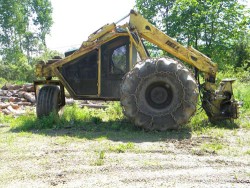
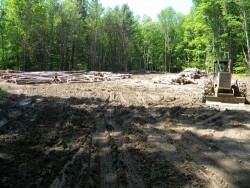
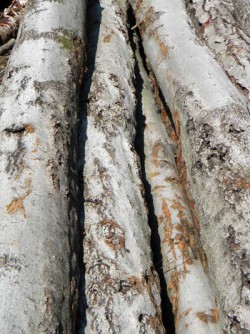
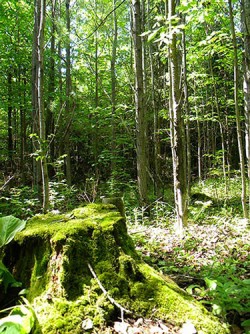
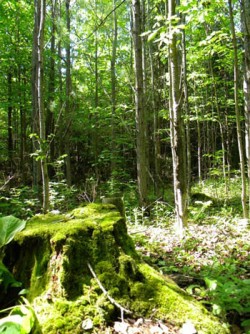
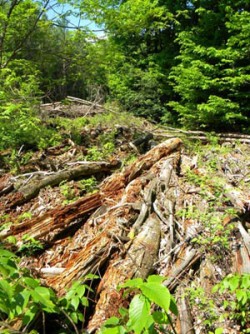
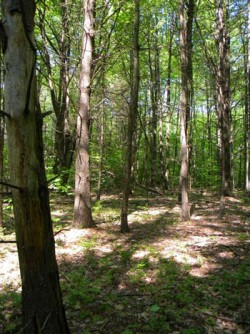
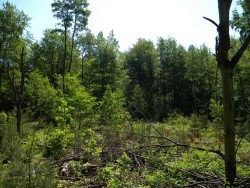
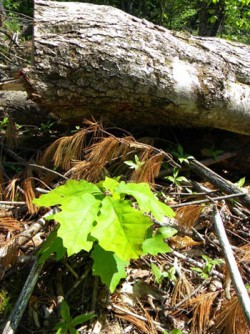
Discussion *